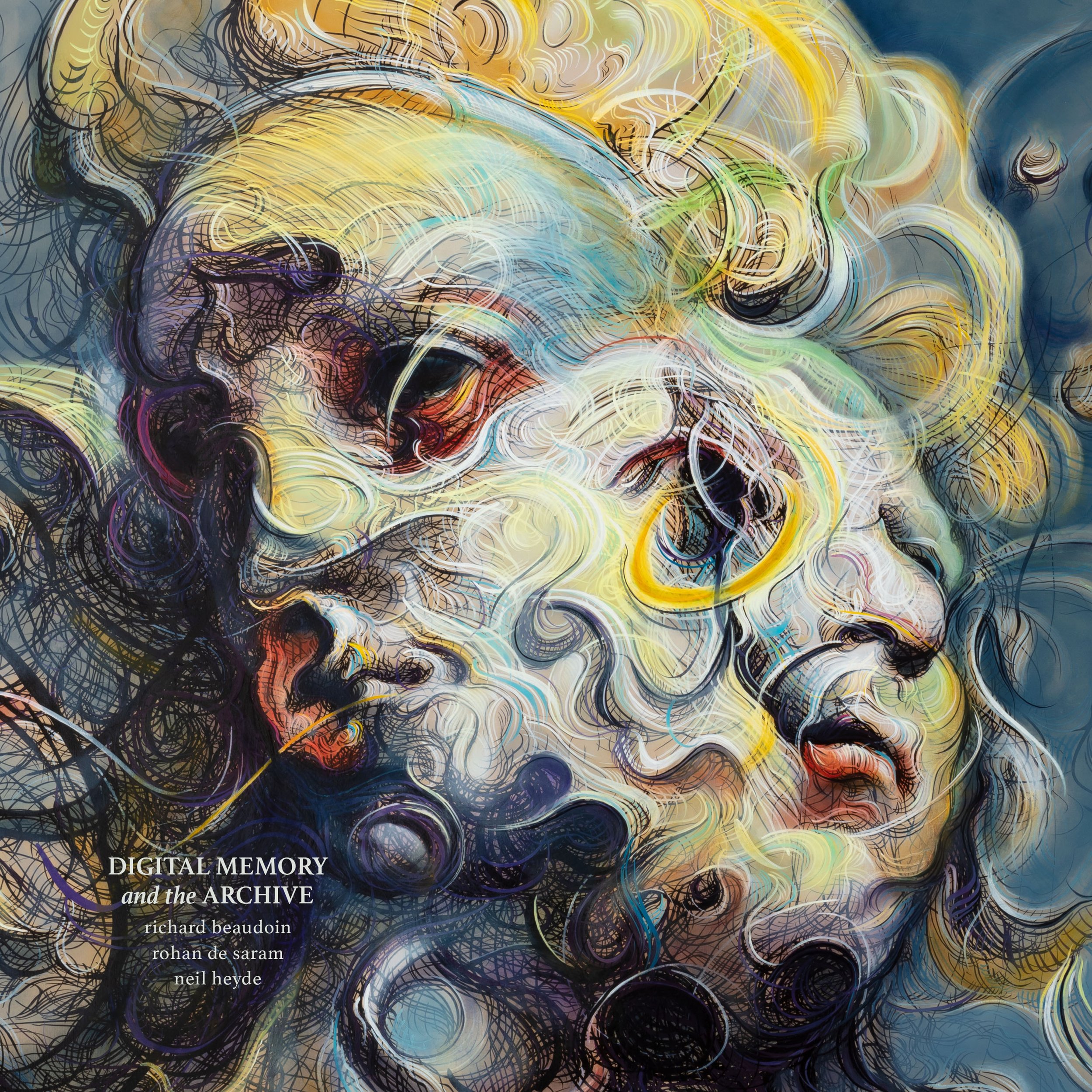DIGITAL MEMORY AND THE ARCHIVE
a cycle of six works for one and two cellos
view the booklet here
scores of each piece available upon request
purchase the recording here
Reproducció (after Casals/Bach)
Reproducció is based on an excerpt of Pablo Casals’s recording of the Sarabande from J. S. Bach’s Cello Suite in D minor, BWV 1008, made at Abbey Road Studios, London, on 23 November 1936. The title is the Catalan word for a copy of something, such as a painting. The score is a rather faithful transcription of Casals’s rendering. The notation divides the recording into a series of discreet sounds and places a number above each one. The cellist produces the notated sound while silently counting to its associated number. By keeping a steady count, Casals’s recording is re-sounded. The work was commissioned by the Royal Academy of Music, London, in celebration of their 200th anniversary, and premiered there, in the Angela Burgess Recital Hall, by Neil Heyde on 9 November 2020. Reproducció is dedicated to Rohan de Saram.
Unikat (after Argerich/Chopin)
Unikat is based Martha Argerich’s recording of Fryderyk Chopin’s Prélude in E minor, op. 28/4 made in the Herkulessaal in Munich in October 1975. The title is the Polish word for ‘one-of-a-kind’ and is used by visual artists to denote a unique print. The cello presents a micro-temporal transcription of Argerich’s recording. The volume of each left hand chord is translated into the length of its corresponding arpeggio. The work was made in dialogue with two artworks by Jorinde Voigt: Symphonic Area Var. 19 [WV 2009-132] and The Landing (Cavallini-Algorithmus) [WV 2017-040]. Unikat exists in versions for flute, clarinet, bassoon, violin, viola, cello, and piano. The piece represents a continuation of the Études d’un prélude series. Unikat is dedicated to Neil Heyde, who gave the premiere at the Sibelius Academy in Helsinki on 24 October 2022.
Bacchante (after Debussy/Debussy)
Bacchante is based on Claude Debussy’s recording of “...Danseuses de Delphes” from Préludes, livre 1, made in Paris on a Welte-Mignon reproducing piano in November 1913. Debussy’s prelude was inspired by his encounter, in the Louvre, with a replica of the Acanthus Column around which are sculpted three bacchantes (female followers of Bacchus). The notation of Bacchante is related to the numbering system seen in Reproducció, though here it goes further: layered beaming and varied note sizes allow both hands of the piano score to be expressed as cello music. Certain moments reflect the mottled surface of plaster. Bacchante is dedicated to Neil Heyde, who gave its premiere at Wilton’s Music Hall, London, on 7 December 2015.
Nachzeichnen/Tracing (after Gould/Schoenberg)
Nachzeichnen/Tracing is based on Glenn Gould’s recording of the first of Arnold Schoenberg’s Sechs kleine Klavierstücke op. 19, made at 30th Street Studio, New York, in September 1965. Playing entirely without the bow, the cellist touches the instrument and its strings in varied ways, including fingernail pizzicati, pad tremolos, thumb plucks, alla guitarra strumming, and hammer-ons. The transcription incorporates the creaking sounds made by Gould’s piano chair. The relationship with the source material is not photorealistic, but rather traces the Schoenberg/Gould material in faint patterns. Its premiere was given by Neil Heyde at Alba New Music in Edinbugh, Scotland on 6 October 2017. Nachzeichnen/Tracing is dedicated to Orit Hilewicz.
You Know I’m Yours (after Monk)
You Know I’m Yours is based on a brief fragment from Thelonious Monk’s improvisation on the track called “Body and Soul [Remake Take 3]” made at 30th Street Studio, New York, on 31 October 1962. The independent meters of Monk’s striding left hand and syncopated right are fused into a single stream of sliding activity for solo cello. The title references a phrase in the lyric of the work that Monk is improvising on: “You know I’m yours, for just the taking.” Neil Heyde gave its premiere at the Tianjin Conservatory of Music, China, on 18 October 2016. You Know I’m Yours is dedicated to Glenn Brown & Edgar Laguinia.
Les deux lauriers (after Teyte/Cortot/Debussy)
Les deux lauriers is based on Maggie Teyte and Alfred Cortot’s recording of ‘La chevelure’ from Claude Debussy’s Trois Chansons de Bilitis, made at Abbey Road Studios, London, on 12 March 1936. The mélodie sets a poem by Pierre Louÿs, which includes the lines: « et nous / étions liés pour toujours ainsi, par la même chevelure / la bouche sur la bouche, ainsi que deux lauriers n’ont / souvent qu’une racine. » The first cello plays Teyte’s voice while the second plays Cortot’s piano. Additions include a looping record skip at « il me regarda d’un regard si . . . » At its premiere, Les deux lauriers was immediately preceded by the playing of a 78rpm of the Teyte/Cortot recording. The duo was composed for Evie Littlefair and Neil Heyde. It was premiered by Rohan de Saram and Neil Heyde at Pushkin House, London, on 22 June 2019. Les deux lauriers is dedicated to Yves Balmer & Dominique Stutzmann.
The six works may be performed separately, or in small groups, or as a set. The title Digital Memory and the Archive applies when all six works are presented as a complete cycle.
